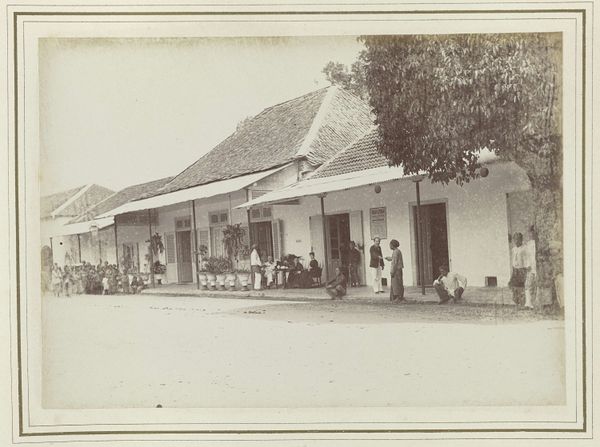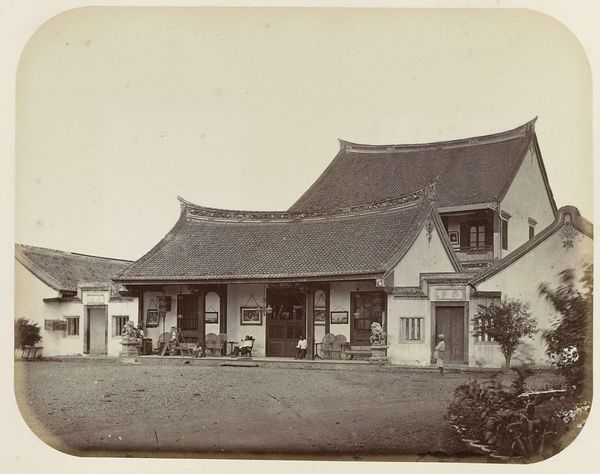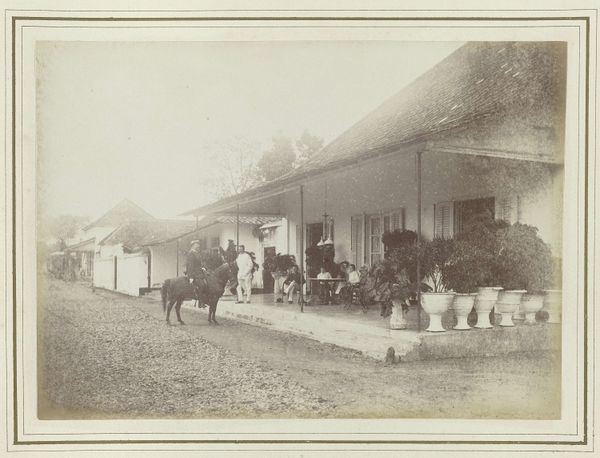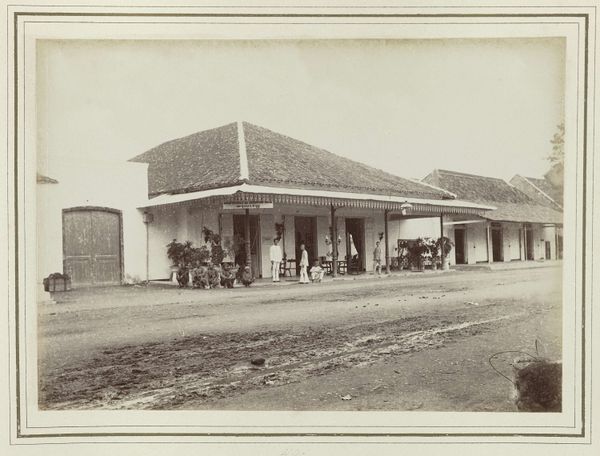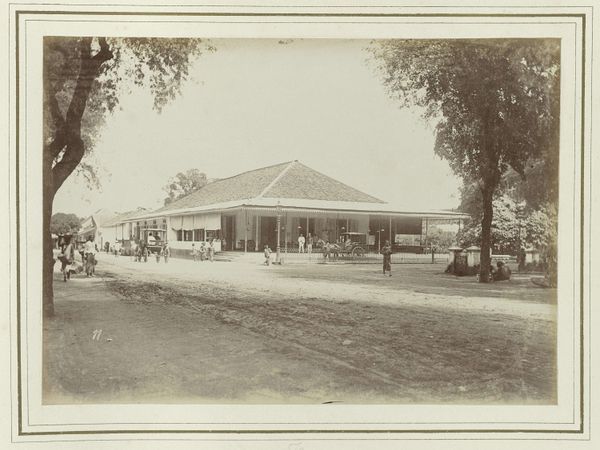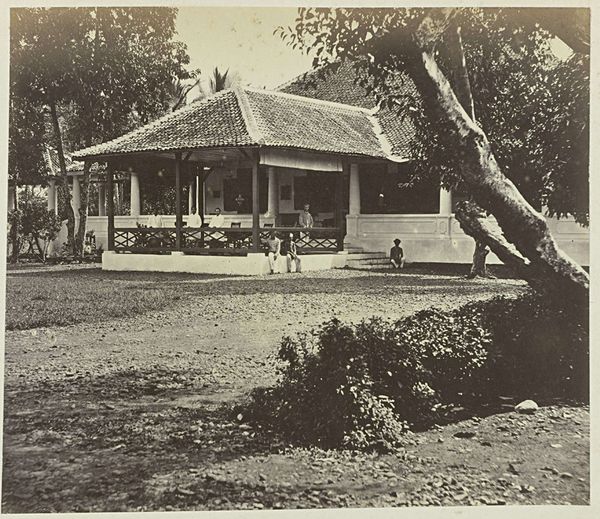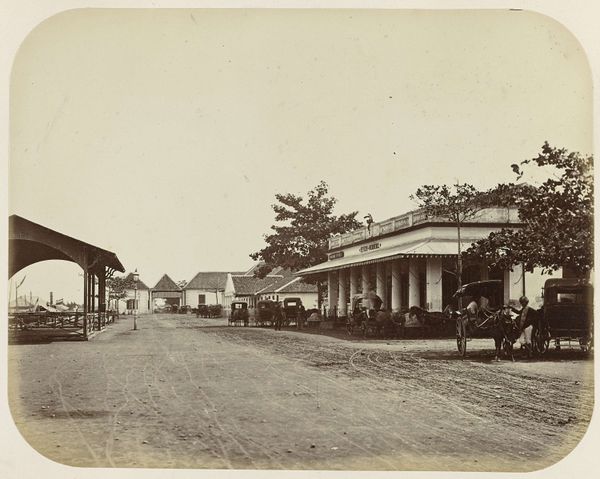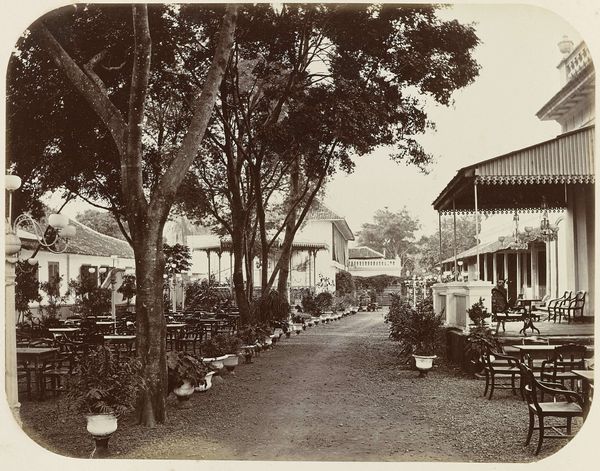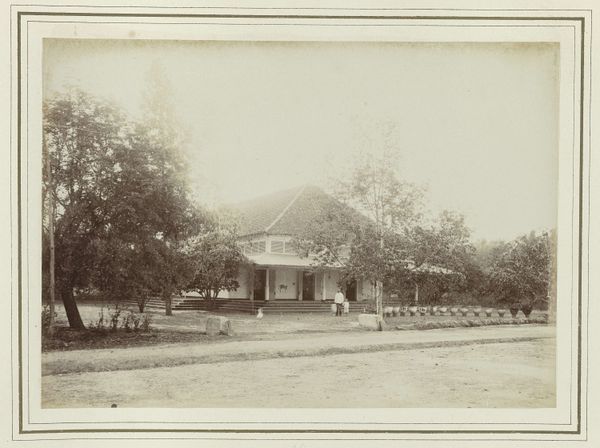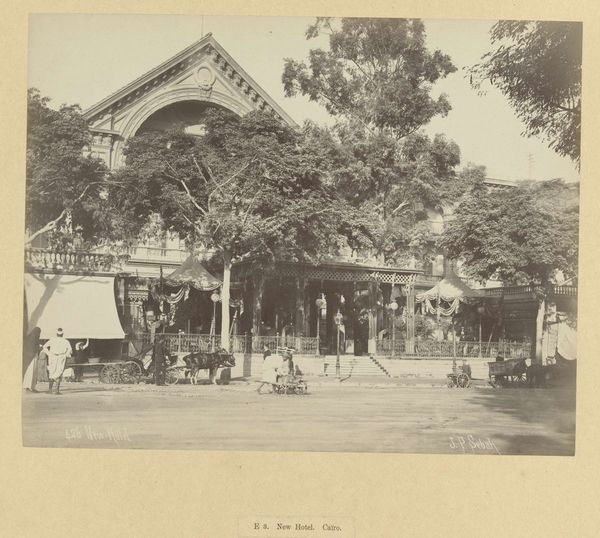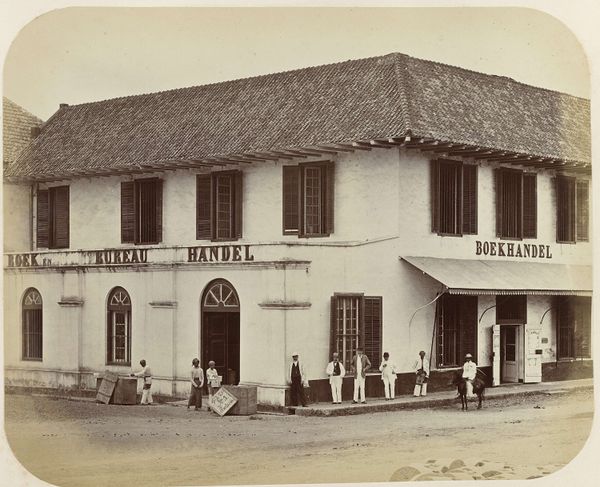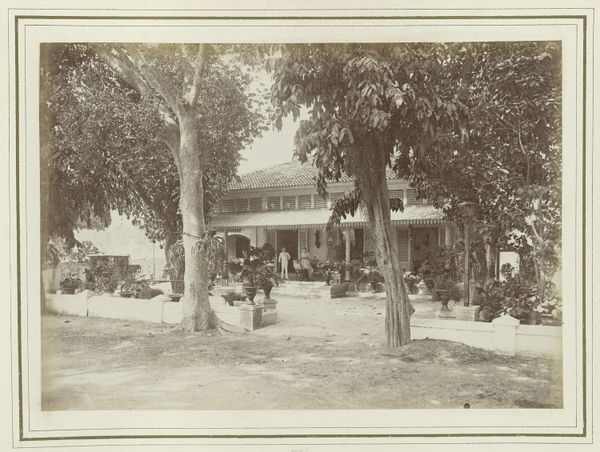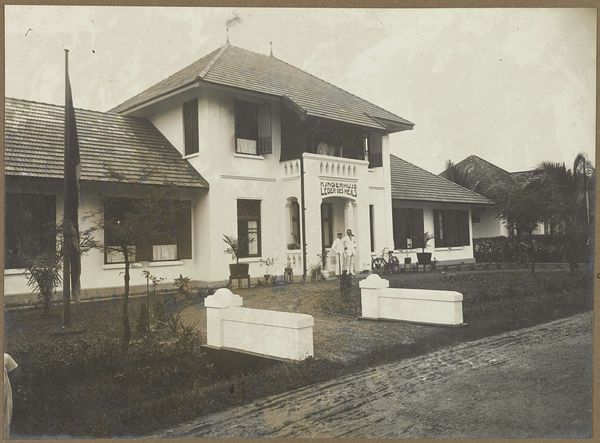
photography, gelatin-silver-print, albumen-print
#
portrait
#
dutch-golden-age
#
landscape
#
archive photography
#
photography
#
historical photography
#
orientalism
#
gelatin-silver-print
#
albumen-print
Dimensions: height 150 mm, width 210 mm
Copyright: Rijks Museum: Open Domain
Curator: This albumen print from 1886, entitled "Pand van Soesman & Co.," captured by Kassian Céphas, invites us to consider a pivotal moment in Indonesian history. It’s now housed at the Rijksmuseum. What’s your initial impression? Editor: Stark. There's a geometrical tension—the sharp angles of the architecture versus the softer organic forms of the lone tree. The tonal range, primarily sepia, lends a documentary feel, despite the evident constructed viewpoint. Curator: Indeed. Céphas, as a Javanese photographer, occupies a fascinating space. He's both documenting colonial enterprise—this pawnshop—and, by his very act of photographing, subtly asserting a Javanese perspective. Pawnshops in that time weren't just businesses; they were deeply implicated in the colonial economy, trapping many in cycles of debt. Editor: The veranda presents an interesting motif. Is that division of space intended as a visible barrier between the colonizer and the colonized? The two men standing in front seem to be acting almost like gates between inside and outside. Curator: Precisely! The veranda acts as a liminal zone—neither fully public nor private, echoing the ambiguous position of those caught between traditional ways of life and the new economic order. Even the shadows seem pregnant with unseen stories. The people clustered on the right have different, almost subjugated affect than those inside and the two people in front. It's all being dictated by unseen but heavily implied power dynamics. Editor: So the photographer has captured, in essence, a visible codification of socioeconomic stratification and tension? Almost a stage set for social interactions? Curator: Precisely! Céphas' photographs offer not just records but carefully framed narratives. In photographing this pawnshop, he documents a site of exchange—monetary but also cultural—infused with layers of symbolic weight. I think it gives you a perspective of the legacy and effects that the pawnshops were imposing at the time. Editor: The composition itself almost becomes a symbolic architecture. The eye is channeled into understanding what pawnshops symbolize as instruments of colonial control. An important perspective into that specific space and time! Curator: Agreed, and in contemplating those nuances, we are confronted with our own interpretations, filtered through our own historical and cultural contexts. The piece then becomes a conversation across time. Editor: An ongoing, visually-mediated conversation.
Comments
No comments
Be the first to comment and join the conversation on the ultimate creative platform.
